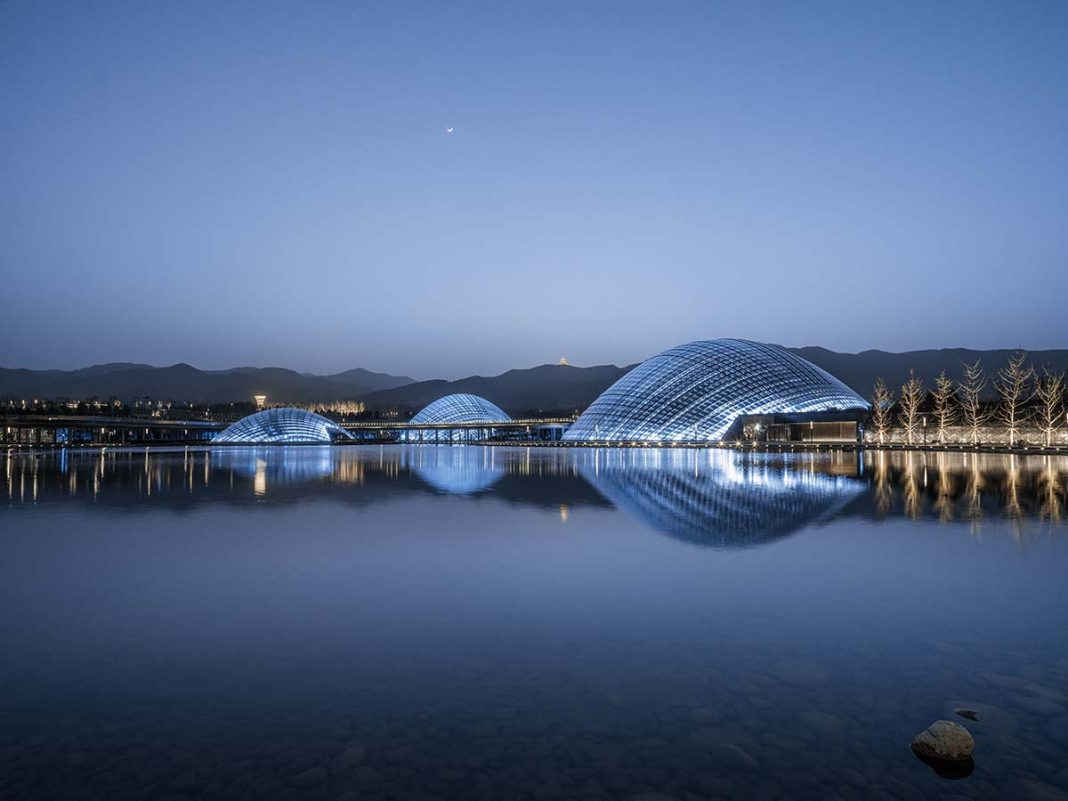DATA SHEET
Client: Botanical Garden Taiyuan
Architectural design: Delugan Meissl Associated Architects
Structural engineering and facade: Bollinger + Grohmann Ingenieure
Landscape design: Beijing BLDJ Landscape Architecture Institute
Greenhouse: Valentien + Valentien Landschaftsarchitekten und Stadtplaner
Landscape architecture: Beijing BLDJ Landscape Architecture Institute
Photo credits: CreatAR
A vibrant, attractive topography modelled on hills and mountains, spontaneous and managed vegetation, lakes, waterfalls, paths and buildings. The project by the Austrian Delugan Meissl Associated Architects studio has transformed a former coal mining district in Taiyuan, PRC, into a park whose purpose is not only to temper the negative impact of the city on its natural environment, an inevitable phenomenon in China given the aggressive urbanisation seen over recent decades, but also to provide a building infrastructure that can be used for research and provide visitors with access to information on natural eco-systems.
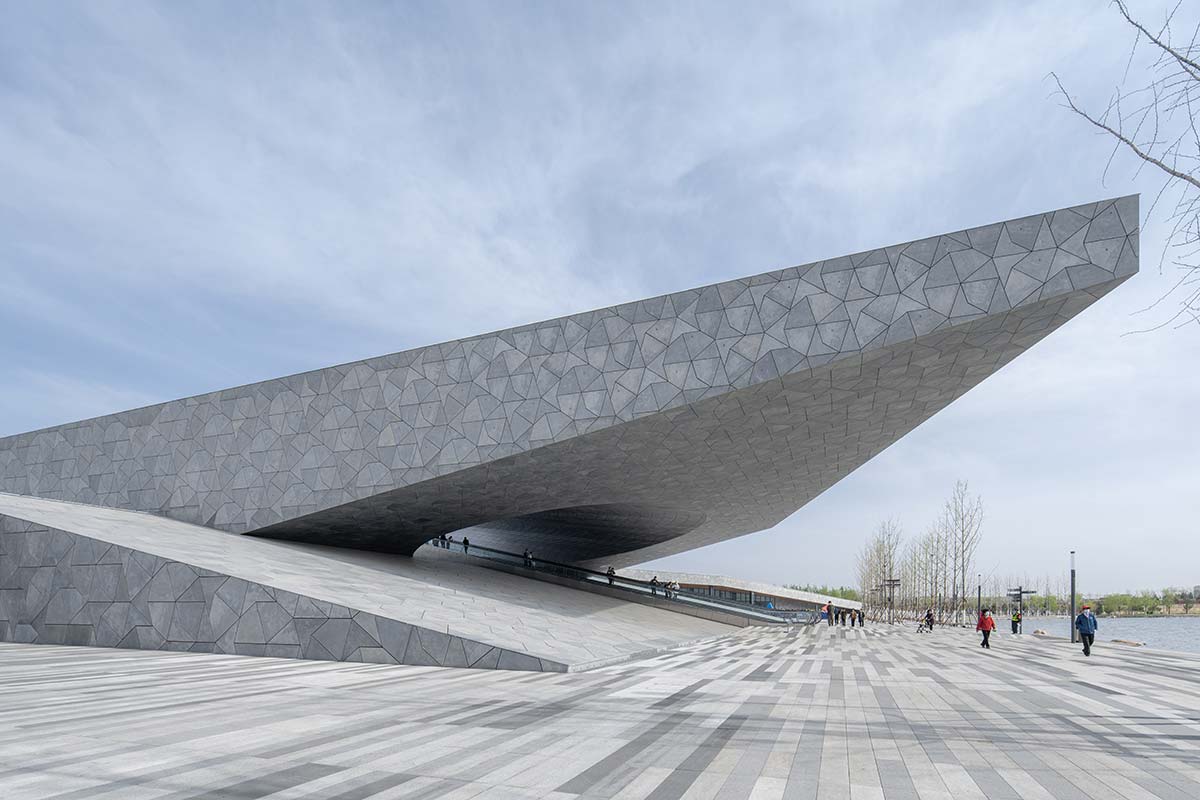
As a result the architectural concept is based on the existing topography, integrating into it the construction of a central entrance building that acts as an interface between architecture and landscape. The building hosts a natural history museum, administrative offices, three iconic greenhouses, a restaurant, a bonsai museum and a research centre with library and staff accommodation. A politically-stated aim to create high-quality recreational areas in or near cities and find ways to manage the high number of visitors underpins the implementation of the programme.
The reception and inviting lobby are near the entrance. A huge cantilevered platform, accessed by from the open staircase that crosses the circular roof opening, stands above the lake in the centre of the park and lead visitors to the heart of the botanical garden.
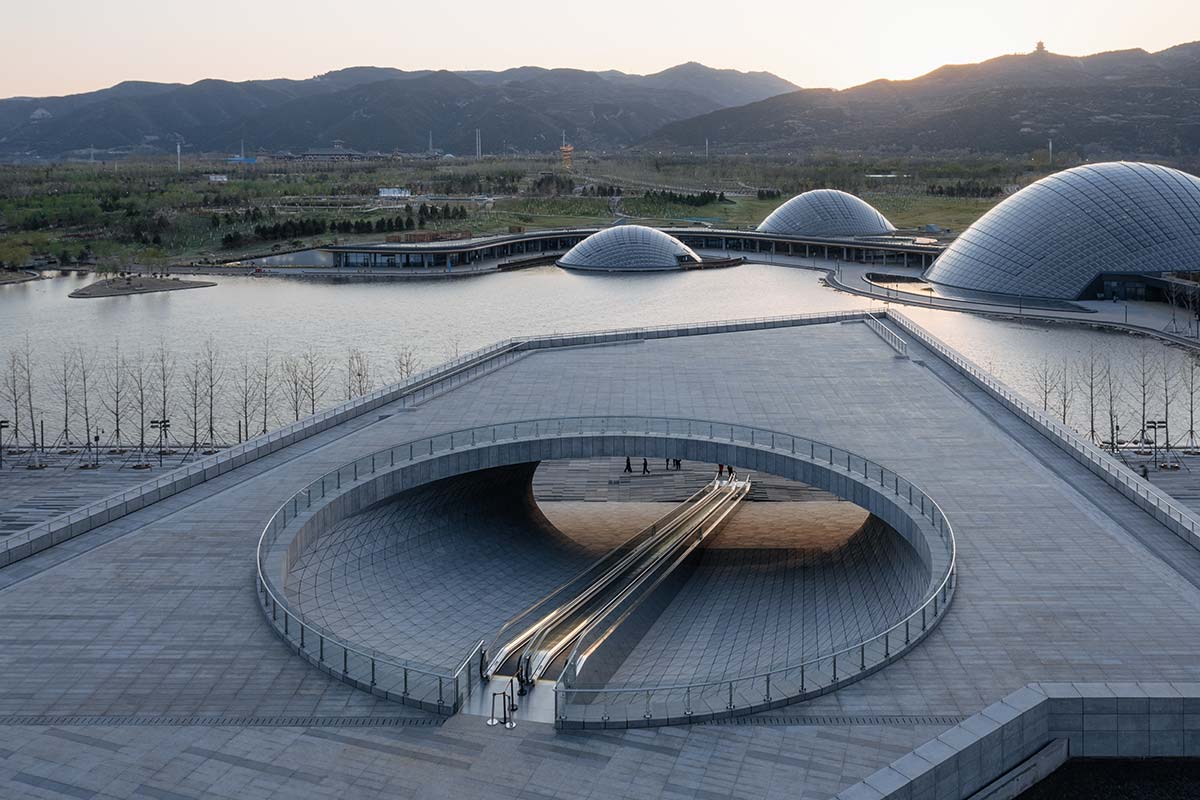
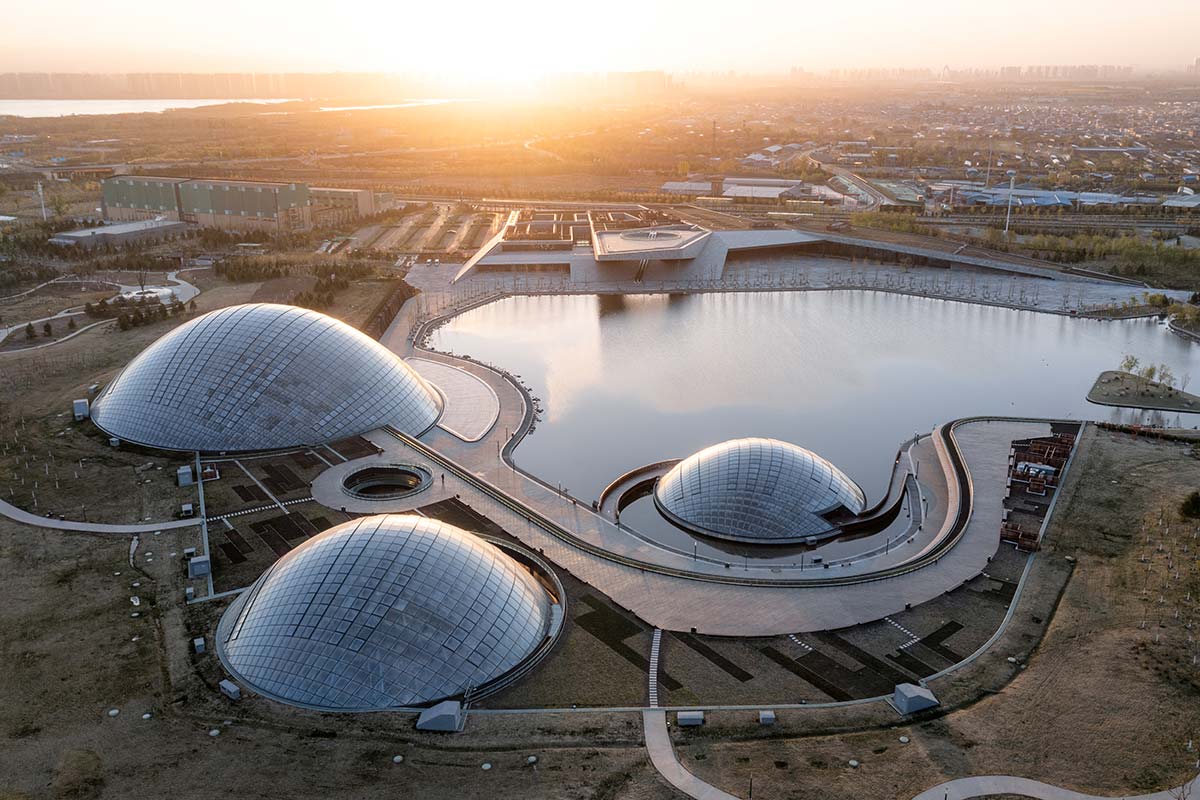
The distinctive features of Taiyuan’s new gardens are the greenhouses with three hemispherical wooden domes. Their construction involved technical expertise from a number of fields – energy design, thermal performance, structural and glass integrity, assembly and logistics.
With a free span of over 90 metres, the biggest of the three domes is one of the world’s largest wooden truss work structures. The greenhouse exteriors resemble a shell, and the use of lamellar beams in the interiors helps create a faceted volume that is flooded with natural light. The design is based on traditional Chinese wooden-roofed buildings, reinterpreting their structural and geometric logic. In this way DMAA has succeeded in giving the landscaped park a sculptural aesthetic, so that it literally emerges from and blends organically into the surrounding infrastructure.
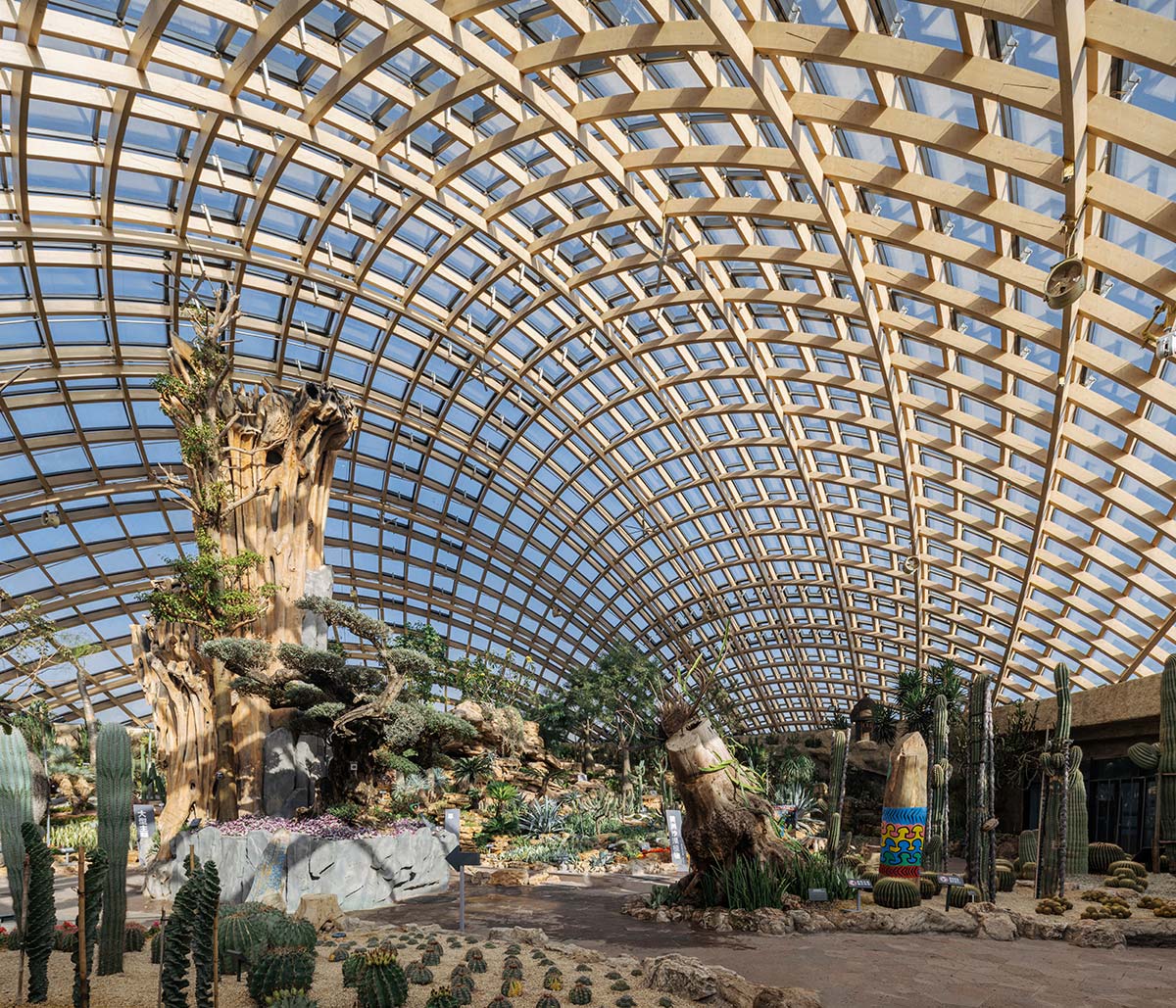
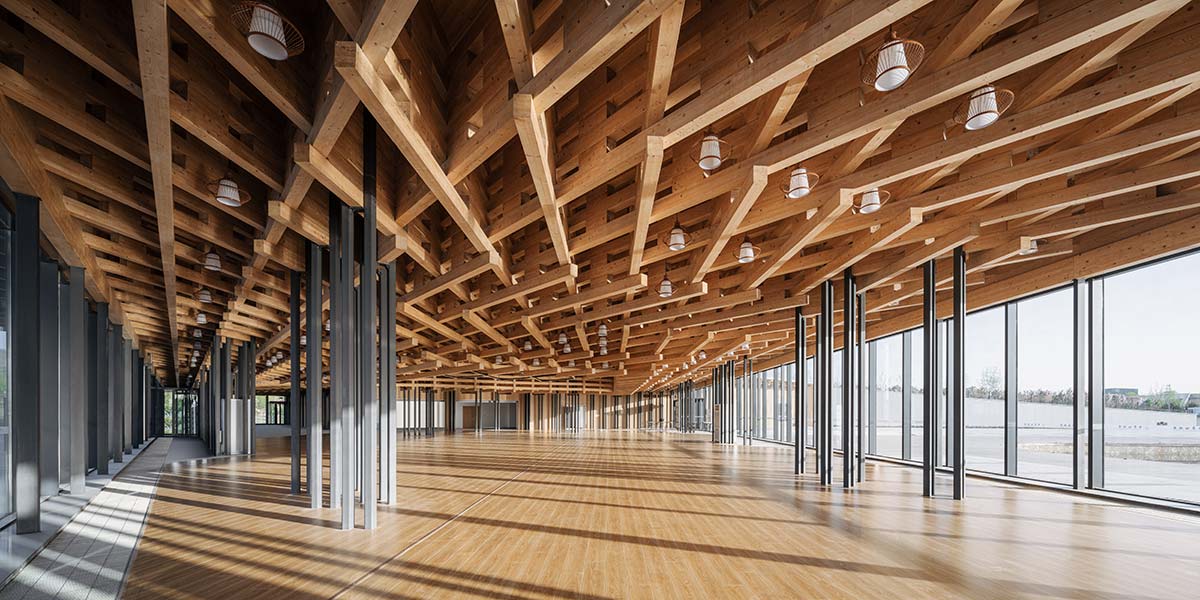
There are different climate conditions inside each of the domes, and each dome houses a different environment. Two favour tropical and desert plants, while the third is designed to create an aquatic eco-system on the lake itself.
The botanical garden also boasts a Bonsai museum, a rotating bowl integrated into the park’s dynamic topography that hosts an arena to display the various species on display. The research centre houses labs, studios, office space, workshops, meeting rooms, lecture theatres and a library. To make it possible to make full use of all facilities, the project is divided into separate pavilions linked by an internal walkway along the ground floor.


